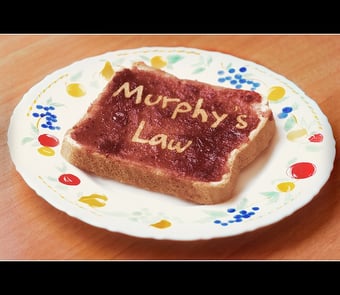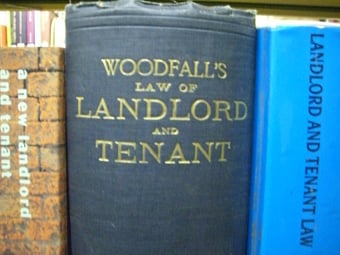 Yesterday I sent an affidavit off as an expert witness for a landscape-related lawsuit. It got me thinking.
Yesterday I sent an affidavit off as an expert witness for a landscape-related lawsuit. It got me thinking.
When most people look at their landscaping, litigation is the last thing that enters their mind. Yet a poorly maintained landscape opens up more opportunities for someone to sue you than there are spots on a baby deer.
I hate to say it, but a quarter of a century in the landscape business has given me a certain amount of perspective into human nature, and it isn’t always pretty. There are people who look for opportunities to exploit your weaknesses if they think it will get them money.
If you don’t meet certain minimum standards, or if you cut corners on the proper way to maintain your property, they will find an opening sooner or later — and the way our legal system is set up, they will probably win.
7 Legal Liabilities That Lurk In Your Commercial Landscape
Just off the top of my head, here is a short list of examples of bad commercial landscaping that can get you sued:
Trip Hazards
Anything that can cause a person to trip, fall, and injure themselves is a liability waiting to happen. This includes fallen branches, unkempt roots, heaving pavement, poorly designed steps, washouts, and sunken irrigation heads.
Inadequate Lighting
The most common landscape lighting fault is allowing areas to remain poorly lit. This includes landscape lights that are too far apart or not bright enough for the area. Lights can also be positioned in such a way as to shine directly into the eyes of motorists or pedestrians, which can blind them and lead to accidents.
Overgrown Trees And Shrubs
There are many ways in which trees can cause injury or damage to both people and property. Unpruned deadwood is a big one. Falling limbs can cause injury, death, and/or property damage. Overgrown branches can also cause injury.
Trees and shrubs can obstruct visibility for both motorists and pedestrians. Heaving of pavement caused by overgrown tree roots can cause injury. Or, if the tree is yours and the pavement belongs to a neighbor, you may be liable for his pavement repair bill.
Flooding And Drainage Issues
I have been to court as an expert more than once for design issues that led to flooding. On six separate occasions, I was called in to testify about design best practices in cases where homebuilders failed to put in proper drainage around a home, leading to water damage. In another case a licensed land surveyor prepared stormwater plans for a subdivision, and incorrectly configured some of the stormwater controls.
Long story short, the plans resulted in the site’s retention pond being overwhelmed after a heavy rain and sending a wall of water right through a home’s front door and out the back. You can imagine the liability on that one.
Hardscape Failures
How safe are pedestrians when your property is guilty of dislodged pavers, washouts due to faulty design and collapsing retaining walls? These and other hardscape-related hazards can easily cause injury and/or property damage that leads to litigation.
Fire Hazards
What type of plants do you have, and how easily are they ignited? If someone puts out a cigarette on your property, how easily will the material it lands on — mulch, dry grass or what have you — catch fire?
Icy Conditions
Don’t think snow and ice impacts you? Think again. As far south as we are, you can still count on getting some freezing weather at least a couple of times a winter. How prepared are you to deal with the slippery conditions it brings?
Landscape Negligence: A Common Cause of Litigation
 One concept property owners really need to be aware of is negligence. The failure to use reasonable care in maintaining your landscape is considered a form of tort, and can lead to litigation.
One concept property owners really need to be aware of is negligence. The failure to use reasonable care in maintaining your landscape is considered a form of tort, and can lead to litigation.
In tort law, property owners owe a duty of care to others, to ensure that they don’t suffer unreasonable loss or harm. When you have a breach of that care due, and that breach is the cause of an injury, it’s considered negligence.
Four conditions must be present for a case to be considered negligence:
Duty Of Care Owed
If you built it and own it, it’s your responsibility to keep it in a safe condition.
Breach Of Duty
In landscaping, this can be any form of oversight or neglect of the property, including but not limited to overgrown shrubs, insufficient lighting, broken pavement, unaddressed erosion, or standing deadwood.
Causation (proximate cause)
This is the event or circumstance that is sufficiently related to actual injury or damage to be determined to be the cause of it. It pertains both to personal injury and to property damage. For example, an unpruned dead tree limb falling on someone’s head can be said to be the cause of that person’s head injury.
Actual Damages
For legal action to follow through, the damages or injury must be demonstrable, not just pure speculation. In other words, someone saying “I hurt my back” isn’t enough without a physician’s records, insurance claim, or other proof.
Examples of negligent landscape management include overgrown shrubbery that can harbor an assailant, dead limbs falling and causing injury, death and/or property damage, trees growing into electric wires or obstructing security devices, and icy steps.
Don’t forget that strangers aren’t the only ones likely to sue over an injury. Your employees, houseguests, or service people like your mail carrier or meter reader can file suits against you, too — and are often encouraged to do so by their insurance companies.
What You Can Do To Avoid Landscaping-Related Legal Trouble
Just because landscaping related lawsuits are common doesn’t mean they will ever happen to you. Here are four steps you can take to proactively avoid them.
Perform A Safety Audit
Walk through your entire property with a notepad and make a list of everything that could potentially cause injury or property damage. Then schedule any needed repairs or maintenance right away.
Vet And Hire True Professionals
In the landscaping industry, anyone can put out their shingle as a professional. But that doesn't mean they have a professional mindset. Before hiring a landscape management company, be sure they’re up to the task. How many years have they been in business? Can they speak intelligently about liability issues? Do they have systems and protocols in place that will protect you as well as making you look good?
Budget For Ongoing Management
Your landscape is a constantly changing, living system. New hazards can come up at any time. The surest way to prevent problems is to stay on top of it — and that means investing in regular maintenance. It is a small price to pay compared to a lawsuit.
Don’t Hesitate
Michael Hyatt’s excellent blog post on leadership places “hesitating to take definitive action” at the top of the list of characteristics of weak leaders. I concur. Procrastination is the single biggest root cause of negligence-related injuries. If you see a potential problem developing on your property, my advice is to make sure it’s taken care of without delay.
Looking For Legal Peace Of Mind?
If you’re concerned about hazard prevention on your property, you’re in the right place. We have the experience and knowledge base it takes to truly make safety a priority on your commercial property. For more information or to schedule a landscape audit, call us at 478-750-7733 or contact us online by filling out this short form.
1 Oct 2024



